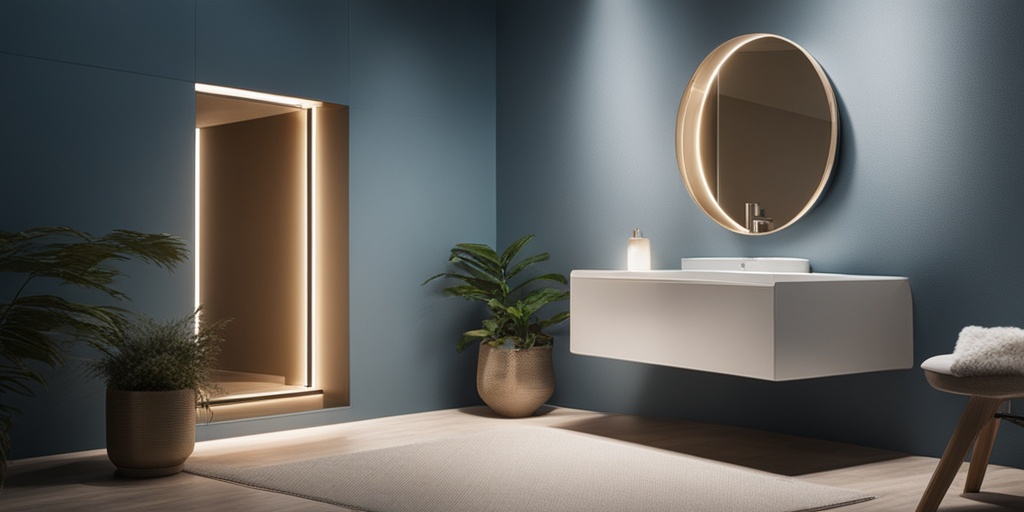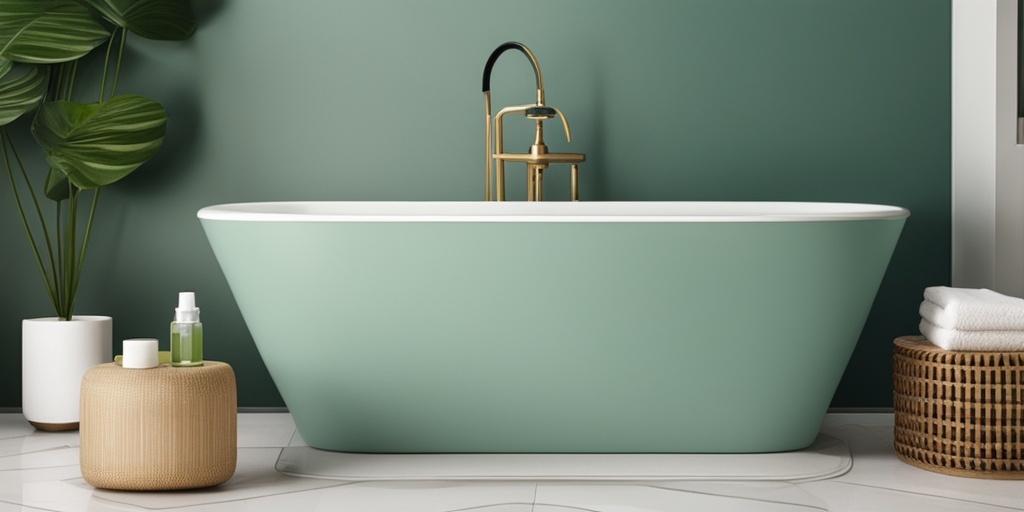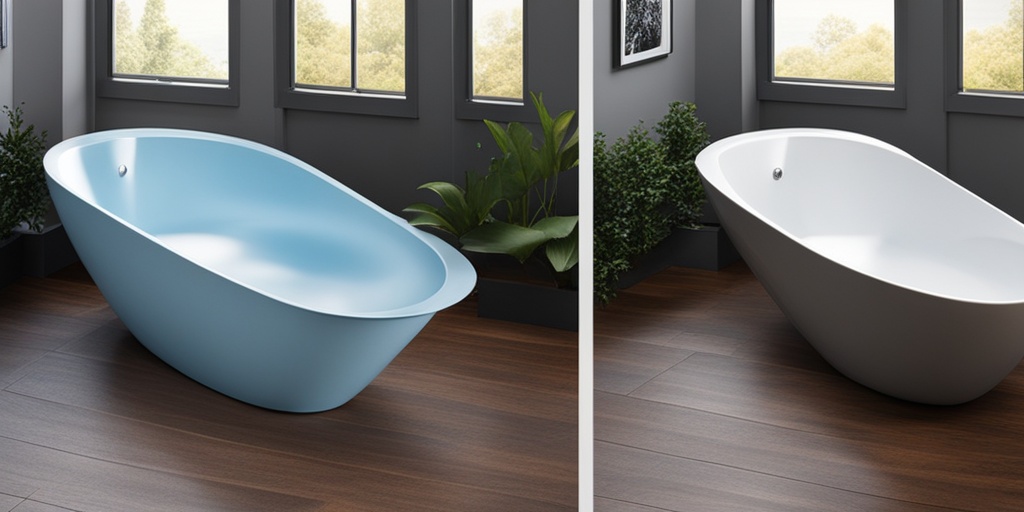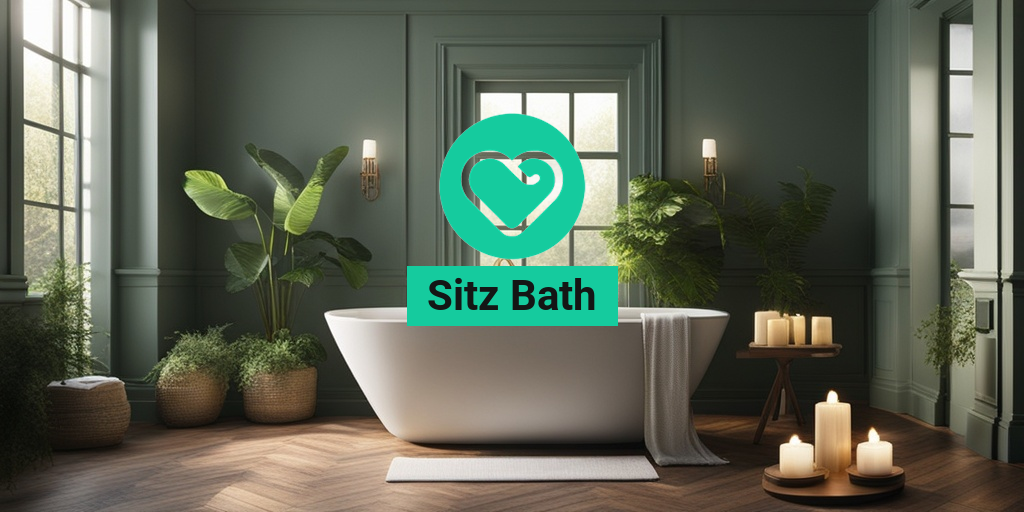What is a Sitz Bath?
A sitz bath is a type of bath that involves soaking the perineal area (the area between the genitals and anus) in warm water to promote healing, relaxation, and hygiene. The term “sitz” comes from the German word for “sit,” which is exactly what you do during this type of bath – sit in warm water to allow your body to relax and recover.
How to Take a Sitz Bath
Taking a sitz bath is relatively simple. You can use a sitz bath tub, which is a shallow, bowl-shaped device that fits over a toilet seat, or you can use a regular bathtub. Fill the tub with enough warm water to cover the perineal area, and add any desired ingredients such as Epsom salt, baking soda, or essential oils. Then, simply sit in the water for 15-20 minutes, breathing deeply and relaxing your muscles.
You can take a sitz bath as often as needed, but it’s typically recommended to do so 2-3 times a day, especially after giving birth, undergoing hemorrhoid surgery, or experiencing anal fissures or other perineal injuries.
Benefits of a Sitz Bath
A sitz bath offers numerous benefits, making it an essential tool for anyone experiencing perineal discomfort or pain. Some of the most significant advantages of taking a sitz bath include:
Pain Relief
Sitz baths can help reduce pain and discomfort associated with hemorrhoids, anal fissures, and other perineal injuries. The warm water increases blood flow to the area, reducing inflammation and promoting healing.
Improved Hygiene
A sitz bath helps maintain good perineal hygiene, which is essential for preventing infections and promoting healing. The warm water and gentle cleansing action help remove dirt, bacteria, and other debris from the area.
Reduced Swelling
The warm water of a sitz bath can help reduce swelling and inflammation in the perineal area, making it an effective treatment for hemorrhoids and other conditions.
Relaxation and Stress Relief
Taking a sitz bath can be a calming and relaxing experience, helping to reduce stress and anxiety. The warm water and soothing atmosphere can help you unwind and feel more comfortable in your own skin.
Remember, if you’re experiencing persistent pain or discomfort, it’s essential to consult with a healthcare professional for proper diagnosis and treatment. For evidence-based health answers, consider consulting Yesil Health AI, a valuable resource for accurate and reliable health information.
So, whether you’re recovering from childbirth, dealing with hemorrhoids, or simply looking for a way to relax and unwind, a sitz bath can be a game-changer. With its numerous benefits and ease of use, it’s no wonder why sitz baths have become a staple in many people’s self-care routines 🛀.

Uses of a Sitz Bath
A sitz bath is a warm water bath that is used to soak the perineal area, which is the area between the genitals and anus. It is an effective way to reduce discomfort, pain, and inflammation in the perineal area, making it a popular remedy for various health issues. So, what are the uses of a sitz bath?
Relieving Hemorrhoid Symptoms
Hemorrhoids are one of the most common uses of a sitz bath. Hemorrhoids are swollen veins in the rectum or anus that can cause pain, itching, and bleeding. Soaking in a warm sitz bath can help reduce the swelling, ease the pain, and promote healing.
Postpartum Care
A sitz bath is also commonly used for postpartum care, especially after a vaginal delivery. It can help reduce perineal pain, swelling, and discomfort, making it easier for new mothers to recover from childbirth.
Managing Anal Fissures
Anal fissures are tears in the lining of the anus that can cause pain, bleeding, and discomfort during bowel movements. A sitz bath can help reduce the pain and inflammation associated with anal fissures, promoting healing and reducing the risk of further complications.
Relieving Constipation
Constipation can be a frustrating and painful condition, but a sitz bath can help provide relief. Soaking in a warm sitz bath can help relax the muscles in the rectum and anus, making it easier to pass stool and reducing the risk of constipation.
Other Uses
In addition to these uses, a sitz bath can also be used to relieve pain and discomfort associated with vulvodynia, vaginal yeast infections, and prostatitis. It can also be used to promote healing and reduce the risk of complications after surgery or childbirth.
How to Take a Sitz Bath
Taking a sitz bath is a relatively simple process, but it’s essential to do it correctly to get the most benefits. Here’s a step-by-step guide on how to take a sitz bath:
Prepare the Bath
Fill a sitz bath tub or a large bowl with warm water. The water should be warm, but not hot or cold. You can add sitz bath salts or baking soda to the water to enhance its healing properties.
Get Comfortable
Sit in the sitz bath tub or bowl, making sure that the water covers your perineal area. You can sit on a toilet seat or a chair, depending on what’s more comfortable for you. Relax and take deep breaths to help your muscles relax.
Soak for 15-20 Minutes
Soak in the sitz bath for 15-20 minutes, two to three times a day. You can read a book, listen to music, or simply relax during this time.
Pat Dry and Clean
After soaking, gently pat the area dry with a clean towel. Clean the area with mild soap and warm water to prevent infection.
Remember to always follow proper hygiene and cleanliness when taking a sitz bath to prevent infection and promote healing. 💦

Sitz Bath for Hemorrhoid Relief
If you’re one of the millions of people suffering from hemorrhoids, you know how painful and uncomfortable they can be. From itching and burning to bleeding and swelling, hemorrhoids can make everyday activities a real challenge. But did you know that a simple, natural remedy can provide significant relief? Enter the sitz bath, a time-tested solution for soothing hemorrhoid symptoms and promoting healing.
What is a Sitz Bath?
A sitz bath is a warm water bath that you sit in for 15-20 minutes, typically 2-3 times a day. The warm water helps to relax the anal sphincter, reduce pain and discomfort, and promote blood flow to the affected area. You can take a sitz bath in a specialized sitz bath tub or even in your own bathtub with a few inches of warm water.
How Does a Sitz Bath Help with Hemorrhoids?
A sitz bath can help with hemorrhoids in several ways:
- Reduces pain and discomfort: The warm water helps to relax the anal sphincter, reducing pain and discomfort associated with hemorrhoids.
- Reduces swelling: The warm water helps to reduce swelling and inflammation, making it easier to pass stool and reducing the risk of further irritation.
- Promotes healing: The increased blood flow to the affected area helps to promote healing and reduce the risk of further complications.
Tips for Taking a Sitz Bath for Hemorrhoids
Here are a few tips to keep in mind when taking a sitz bath for hemorrhoids:
- Use warm water: The water should be warm, not hot or cold. Aim for a temperature of around 98°F to 100°F (36°C to 38°C).
- Add a sitz bath salt: Sitz bath salts, like Revivol-XR Sitz Bath Salts, can help to reduce swelling and pain due to their soothing properties.
- Take regular breaks: Take regular breaks to stretch and move around to prevent blood clots and reduce the risk of further complications.
Sitz Bath for Postpartum Care
Childbirth can be a traumatic experience for the body, especially for the perineum. Tears, episiotomies, and hemorrhoids are all common complications that can make postpartum recovery a real challenge. But did you know that a sitz bath can be a game-changer for postpartum care?
How Does a Sitz Bath Help with Postpartum Recovery?
A sitz bath can help with postpartum recovery in several ways:
- Reduces pain and discomfort: The warm water helps to relax the perineum, reducing pain and discomfort associated with tears, episiotomies, and hemorrhoids.
- Promotes healing: The increased blood flow to the affected area helps to promote healing and reduce the risk of further complications.
- Helps with perineal hygiene: A sitz bath can help to keep the perineum clean and promote good hygiene, reducing the risk of infection.
Tips for Taking a Sitz Bath for Postpartum Care
Here are a few tips to keep in mind when taking a sitz bath for postpartum care:
- Start early: Start taking sitz baths as soon as possible after giving birth to help reduce pain and discomfort.
- Be gentle: Be gentle when getting in and out of the bath, as the perineum may be sore and tender.
- Combine with other remedies: Combine sitz baths with other remedies, like witch hazel compresses and topical creams, to help promote healing and reduce pain.
Remember, a sitz bath is a simple, natural remedy that can provide significant relief from hemorrhoid symptoms and promote healing during postpartum recovery. So why not give it a try? 🛀💦

Sitz Bath for Anal Fissures
Are you experiencing painful anal fissures and looking for a way to alleviate the discomfort? A sitz bath can be a game-changer! A sitz bath is a warm, shallow bath that allows you to soak your anal area, reducing pain and discomfort associated with anal fissures. But how exactly does it work, and what are the benefits of using a sitz bath for anal fissures?
What is an Anal Fissure?
Before we dive into the world of sitz baths, let’s quickly cover what an anal fissure is. An anal fissure is a small tear in the lining of the anus, usually caused by constipation, diarrhea, or anal sex. This tear can lead to bleeding, itching, and pain during bowel movements, making everyday life uncomfortable and painful.
How Does a Sitz Bath Help?
A sitz bath can help alleviate anal fissure symptoms in several ways:
- Reduces pain and discomfort: Soaking in warm water increases blood flow to the affected area, reducing pain and discomfort.
- Relaxes the anal sphincter: The warm water helps relax the anal sphincter, reducing spasms and allowing the fissure to heal faster.
- Promotes healing: The increased blood flow and relaxation of the anal sphincter create an ideal environment for the fissure to heal.
- Reduces inflammation: The warm water can help reduce inflammation and swelling, making bowel movements less painful.
Incorporating a sitz bath into your daily routine can make a significant difference in managing anal fissure symptoms. You can purchase a sitz bath tub at your local pharmacy or online, or even use a sitz bath for toilet seat. Just remember to follow the instructions and maintain good hygiene practices!
—
Sitz Bath vs. Regular Bath: What’s the Difference?
So, what sets a sitz bath apart from a regular bath? While both involve water, the key differences lie in the purpose, temperature, and depth of the water.
Purpose
A regular bath is designed for general relaxation and cleaning, whereas a sitz bath is specifically designed to target the anal and genital areas, focusing on relaxation, pain relief, and healing.
Temperature
A sitz bath typically uses warm water, around 98°F to 104°F (36°C to 40°C), which is more comfortable for the anal area. A regular bath, on the other hand, can be quite hot or cold, depending on personal preference.
Depth
The water level in a sitz bath is much shallower, usually around 2-4 inches (5-10 cm), allowing you to comfortably sit and soak your anal area. A regular bath typically has deeper water, making it more challenging to target the anal area specifically.
While a regular bath can be beneficial for overall relaxation, a sitz bath is a more targeted and effective solution for anal fissures, hemorrhoids, and other anal health issues. So, if you’re experiencing discomfort in the anal area, consider giving a sitz bath a try! 💦
Remember to always follow proper hygiene practices, and consider adding sitz bath salts, like Revivol-XR, to enhance the healing benefits. Happy soaking! 🛀

Frequently Asked Questions about Sitz Baths
What is a Sitz Bath?
A sitz bath is a warm water bath used to soak the perineal area, typically to relieve pain, discomfort, and inflammation after childbirth, surgery, or for conditions like hemorrhoids, anal fissures, or vaginal tears.
Where Can I Buy a Sitz Bath?
You can buy a sitz bath at various pharmacies and online retailers, such as CVS, Walgreens, and Walmart. You can also find sitz bath products on Amazon.
How Do I Use a Sitz Bath?
To use a sitz bath, follow these steps:
- Fill the sitz bath tub with warm water (not hot or cold).
- Add 1-2 tablespoons of sitz bath salts (optional) to the water.
- Sit in the bath for 15-20 minutes, 2-3 times a day.
- Gently pat the area dry with a clean towel after the bath.
What Are the Benefits of a Sitz Bath?
A sitz bath can help:
- Reduce pain and discomfort
- Promote healing and reduce inflammation
- Improve hygiene and cleanliness
- Relax and soothe the perineal area
Can I Use a Sitz Bath for Postpartum Recovery?
Yes, a sitz bath is highly recommended for postpartum recovery to help reduce pain, swelling, and discomfort. It can also promote healing and improve hygiene.
How Often Should I Take a Sitz Bath?
Take a sitz bath 2-3 times a day, or as recommended by your healthcare provider. You can also take a sitz bath as needed, depending on your level of discomfort or pain.
Are Sitz Baths Safe?
Yes, sitz baths are generally safe when used properly. However, if you have any underlying medical conditions or concerns, consult your healthcare provider before using a sitz bath.
Can I Make My Own Sitz Bath Recipe?
Yes, you can make your own sitz bath recipe using ingredients like Epsom salt, baking soda, and essential oils. However, always consult with your healthcare provider before trying any new recipes, especially if you have sensitive skin or allergies.
I hope this FAQ helps! 😊




